Vande Berg Scales Blog
Welcome to our wonderful blog about Scales!
Call or Email us Today: 712-722-1181 | info@vbssys.com
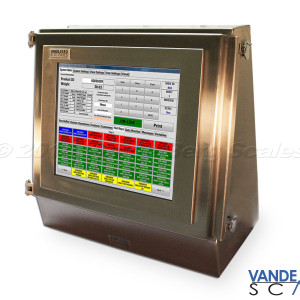
Washdown Computer for Industrial Use: Get More Than a Toy
Washdown PC, December 12, 2014
We make washdown computers that are designed to get things done in real world production settings. Often, we see competitors who simply take a basic computer and seal it in a stainless steel enclosure and pass it off as an industrial washdown computer. Technically, they may be right that they have made a computer that repels water and not just a computer in a box, but does it have the peripherals that make industrial controller/computers truly productive and the power protection to keep it running? Our customers have come to appreciate that our design allows room for an uninterruptible power supply within our NEMA 4X enclosure.
We add modular I/O capabilities that transform a basic computer into an HMI/Controller with nearly limitless abilities to run processes and gather data. We start with a 17-inch touchscreen monitor that is rated NEMA 4X and mount it in our stainless steel enclosure that has been honed to near perfection. We connect that monitor to a compact CPU by a USB port. From there, we customize the arrangement and location of I/O modules to produce an industrial controller/computer with unmatched versatility that is able to stand up to the harsh washdown practices and the rigorous demands of so many of today’s industries, such as meat, poultry, dairy, seafood, chemical, and pharmaceutical. Contact us today to see how we can provide you with a washdown computer that knows how to get things done.
See our Washdown Computers.
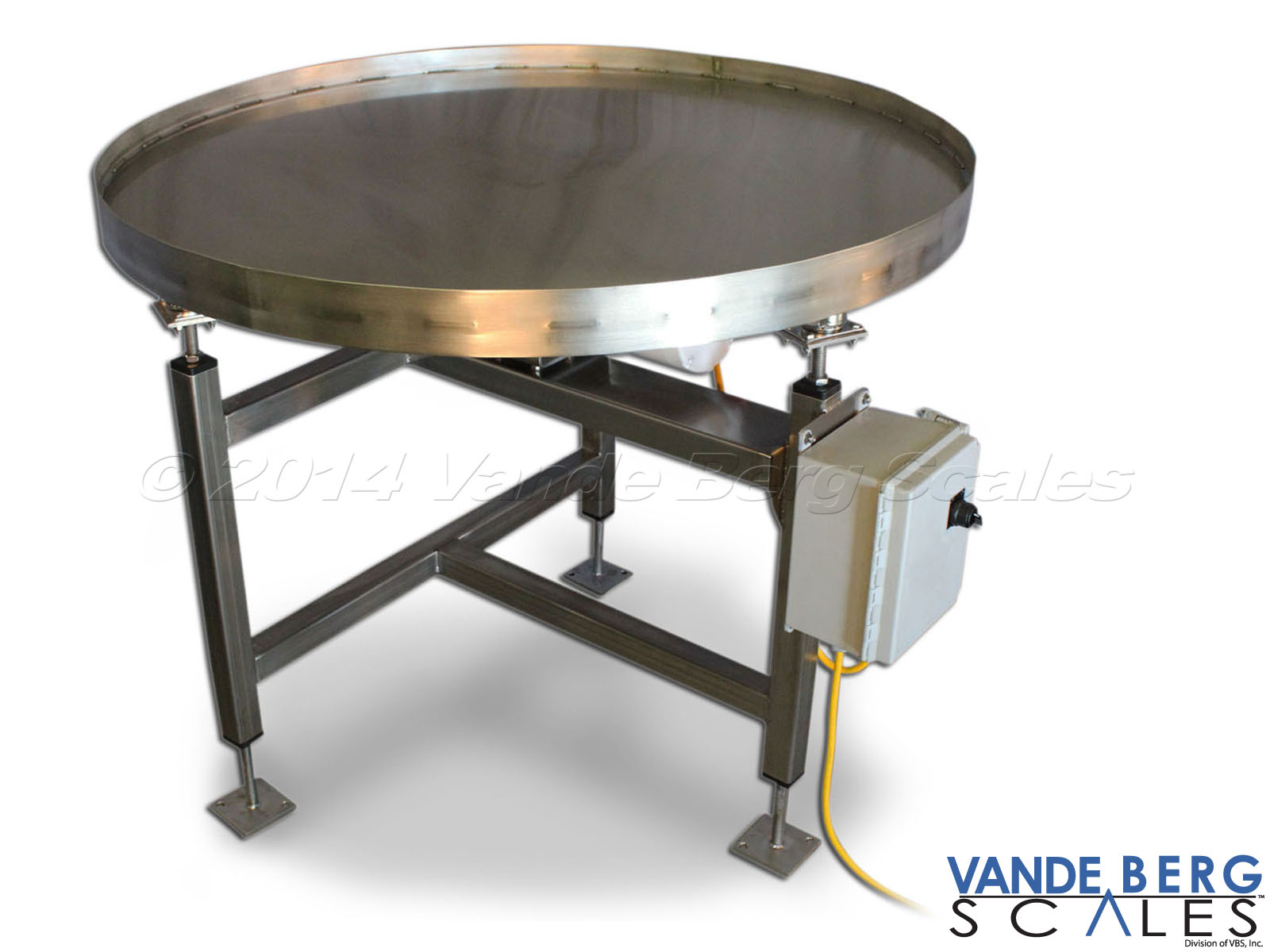
Rotary Turntables: Customizing For Price and Performance
Rotary Turntables, December 11, 2014
They go by many names and descriptions such as pack off turntables, accumulation disks, rotary conveyors, or even lazy Susans. We usually refer to them as rotary turntables. Whatever you choose to call them, the basic idea is the same. They are an inexpensive way to hold products in a small area while keeping them in motion. This can help if you need to manually sort products, mix or match chaotic product, or handle intermittent production surges.
One feature you should give careful attention to is the number of legs to include in your turntable. Four legs provide a wider center of gravity and therefore greater true stability. If your products are not particularly heavy you might be better off with a three-leg design. The advantages of a three-leg rotary turntable design are:
- Lower purchase price
- Easier to level
- Less to clean
Another option to consider is a variable frequency drive (VFD). If you know that your production rate will always be constant then a fixed number of revolutions per minute could be the way to go. If there are known fluctuations in production levels, or even staffing levels, a VFD might pay for itself quickly.
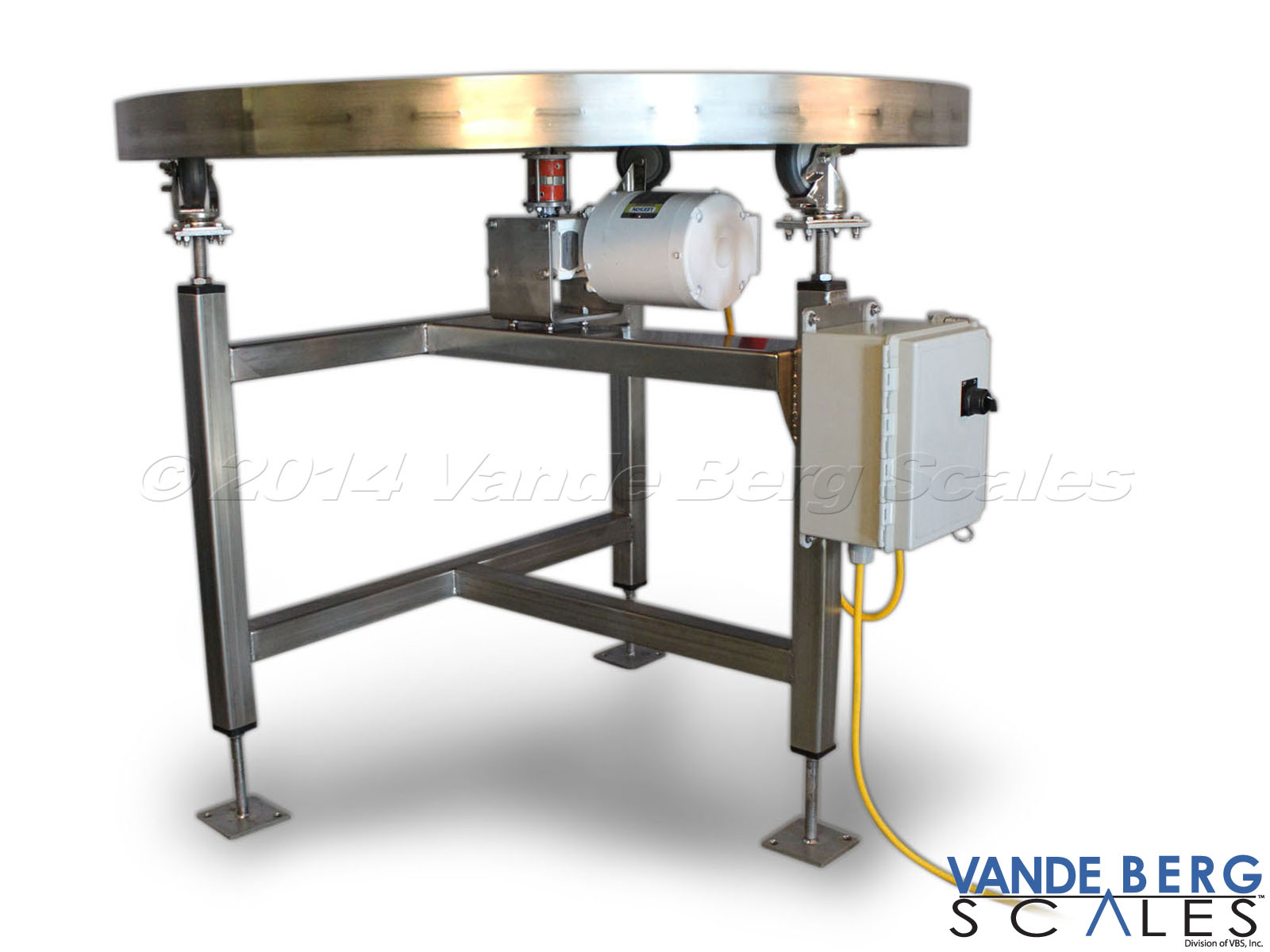
Whatever design and options you choose, we are ready to customize your rotary turntable so that it has the features you require at a price that fits your budget. Give us a call today.
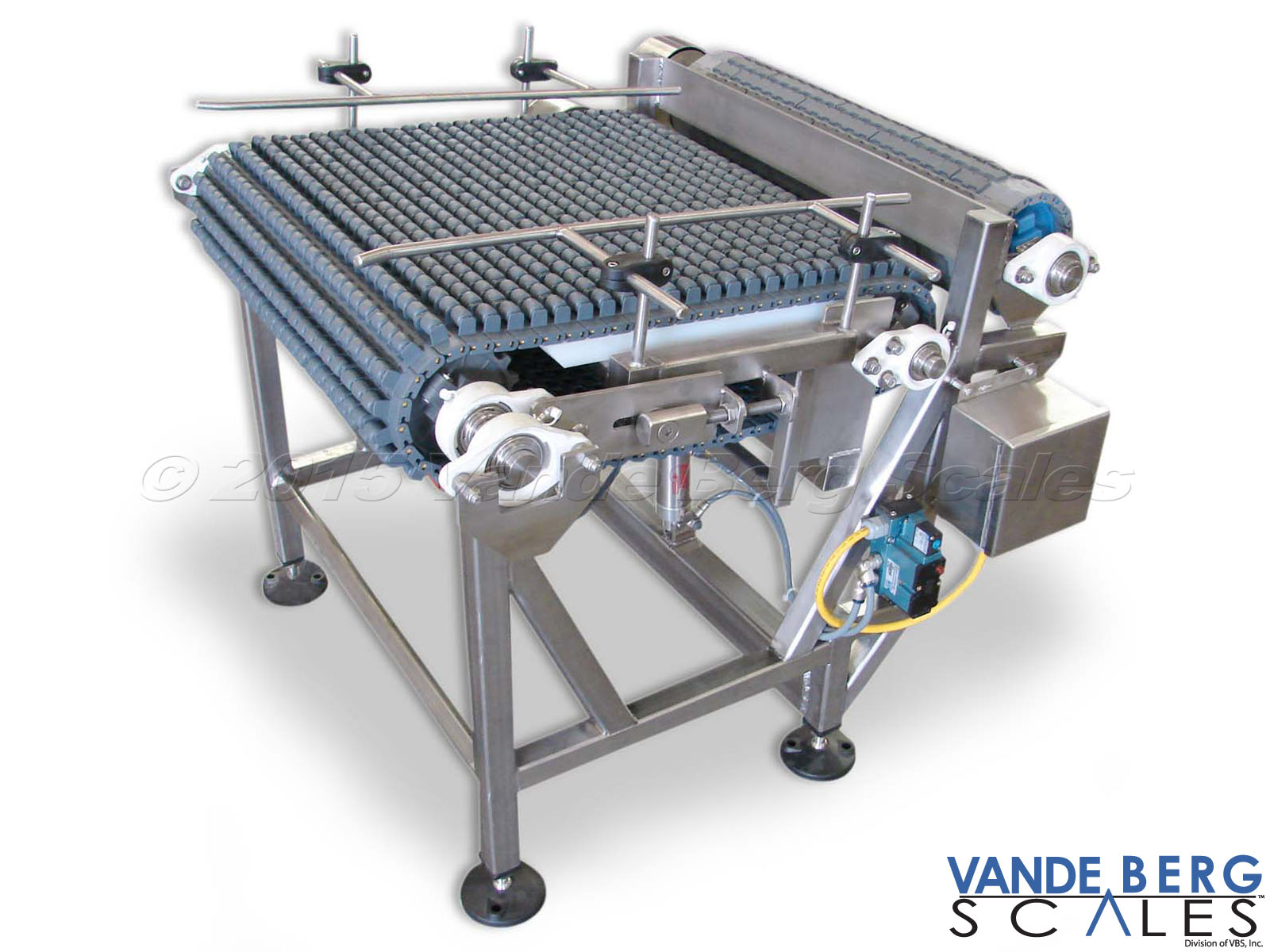
Having Box Spacing Problems? Try Automatic Indexing
Box Spacing Problem, December 05, 2014
In a modern plant, conveyor systems are becoming more of an expectation than a luxury, and where there are multiple conveyors, there are probably some choke points where boxes can get bunched up. The best way to solve this issue is through the use of automatic indexing. If you are simply transporting boxes with your conveyors, tight quarters might not hurt (unless you are trying to converge lanes), but if you are doing any weighing or labeling, some sort of indexing is going to be a necessity. Modern automatic labeling systems for boxes are fairly fast and accurate, but that doesn’t mean that they can just label a steady stream. With a print-and-apply system, the labeler needs time to print the next label before it can apply, so you are going to need to space out your product to give the labeler time.
Also, certain label applicators require more room, like a front of box labeling applicator because it often requires an arm to swing out and then back between boxes. Automatic weighing with conveyor scales or checkweighers requires spacing because you can only have one product being weighed at a time. Imagine two boxes back-to-back. At some point in the weighing process, you would have both of them on the scale. This would give you an excessively high weight reading that would be completely useless, and even worse, could damage your load cell.
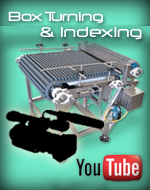
So what are your options?
The deceptively cheap way is to have employees space boxes by hand, but this doesn’t always turn out as planned and paying someone to do it is an accumulating cost. You could also use “traffic cop” sensors to start and stop your conveyors. This works well for the most part, but it could wear your motors out faster, increasing maintenance costs. Some companies use higher speed conveyor sections to put distance between boxes, but this can take up more floor space than necessary depending on required spacing.
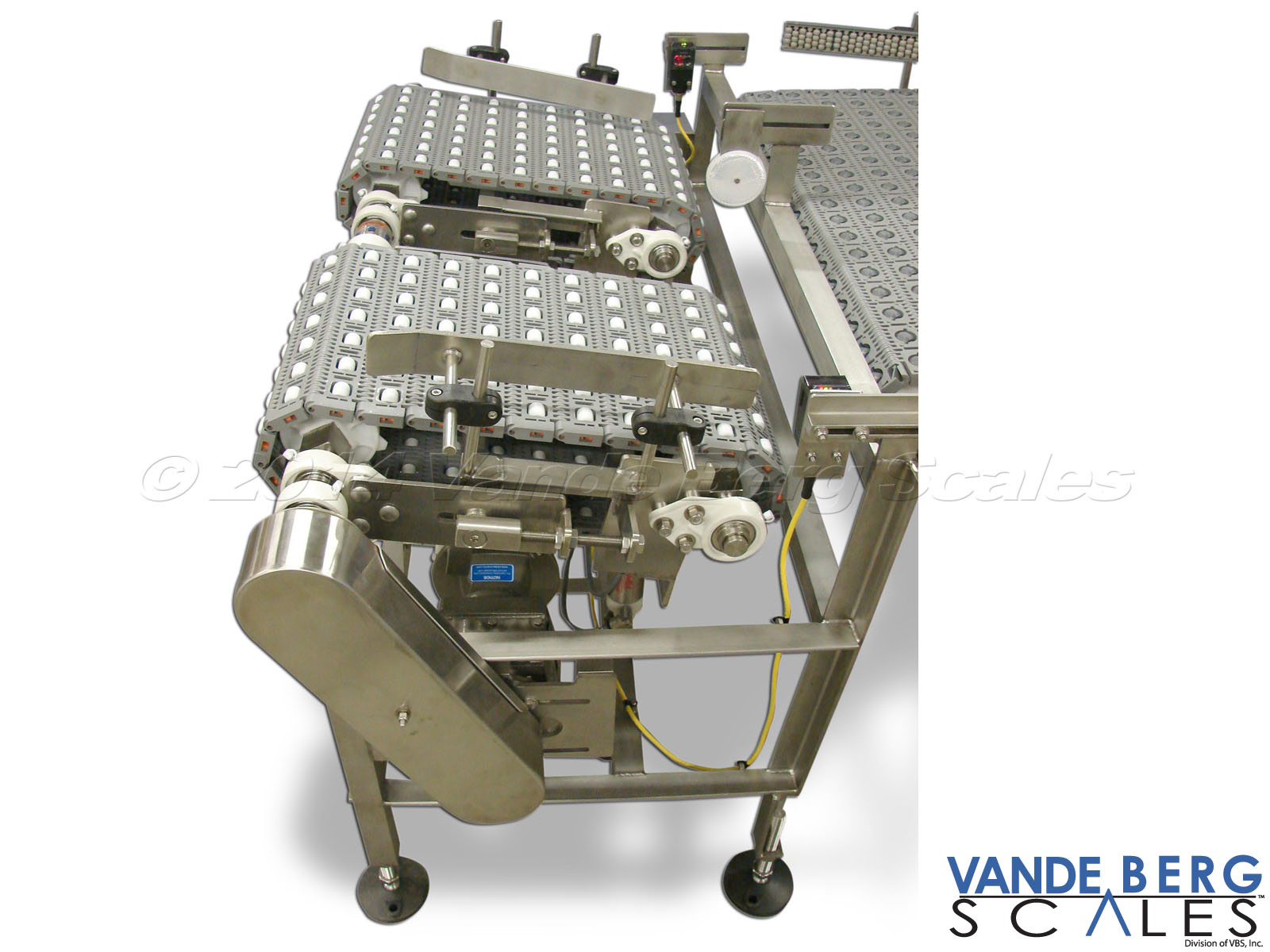
The best way that we have found is to use an indexer conveyor. Our solution is to use a conveyor mounted on a pneumatic cylinder which drops at one end allowing boxes to run into a retaining bulk head. The conveyor can then pivot up and down, allowing only one box at a time to get by. It often uses roller conveyor which relieves the box from friction and utilizes a small speed-up roller which pulls the box away from the one behind it when it is released. Indexing is a very sound method that is capable of giving you exact spacing. We have dealt with systems that use all of these methods, so if you have any questions about indexing and how it could help your process, get in contact with us.
See our Box Indexing Conveyors.
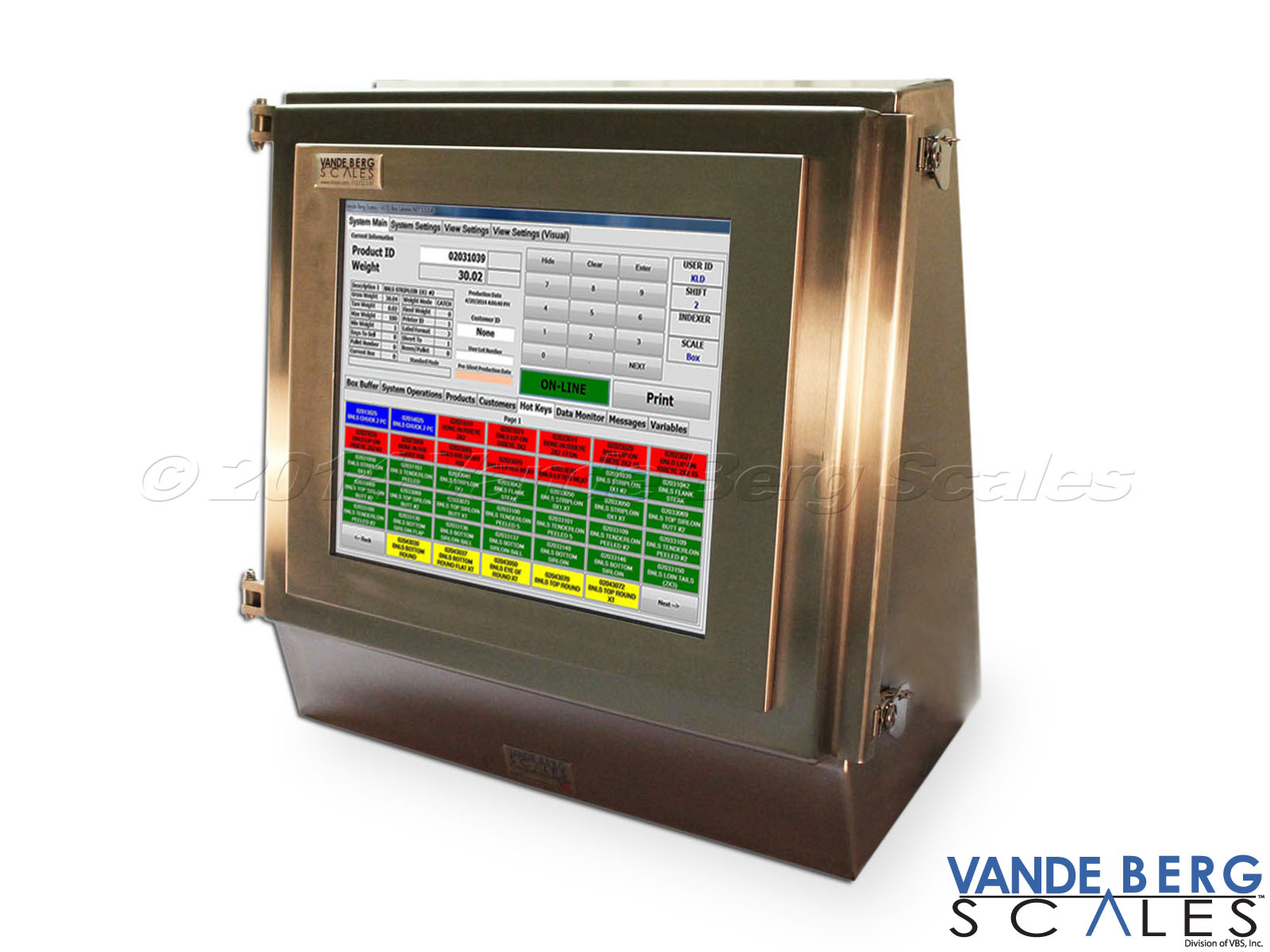
Can Product Info and Weight Be Displayed for Hand Scanner Use?
Hand Scanner Use, December 04, 2014
This was the desire expressed by a client recently. They wanted to use an NTEP “Legal for Trade” certified scale and indicator with a display capable of displaying a barcode with the weight and product information, which could be scanned using a wireless hand scanner. However, when confronted with an obstacle to a customers need, we look for a way to meet the need. The solution in this case, was a custom program for our Scale Data System (SDS) with inclusion of an NTEP certified signal processor, as well as the associated software. The software would actually interpret the weight and display a barcode on the touchscreen display that represented the weight.
The end user was satisfied as they then could use their hand-held barcode scanners to quickly and efficiently obtain the scale weight. This saved the end user the costly process of modifying their hand held scanner host software. We accomplished this task with our SDS 1700 which utilizes a 17-inch NEMA 4X display housed in a stainless steel washdown enclosure. This full featured color touch screen human machine interface is powered by an enclosed industrial controller utilizing an embedded Windows® environment. This SDS has the added benefit of NTEP approved weight indicator functions built in. Consequently, programming can provide for the bar code display desired. Of course, there are additional features available with an SDS such as data management programming, statiscal analysis, as well as Ethernet capabilities. The fact is that the customer’s need has been met.
See our Industrial Controllers.
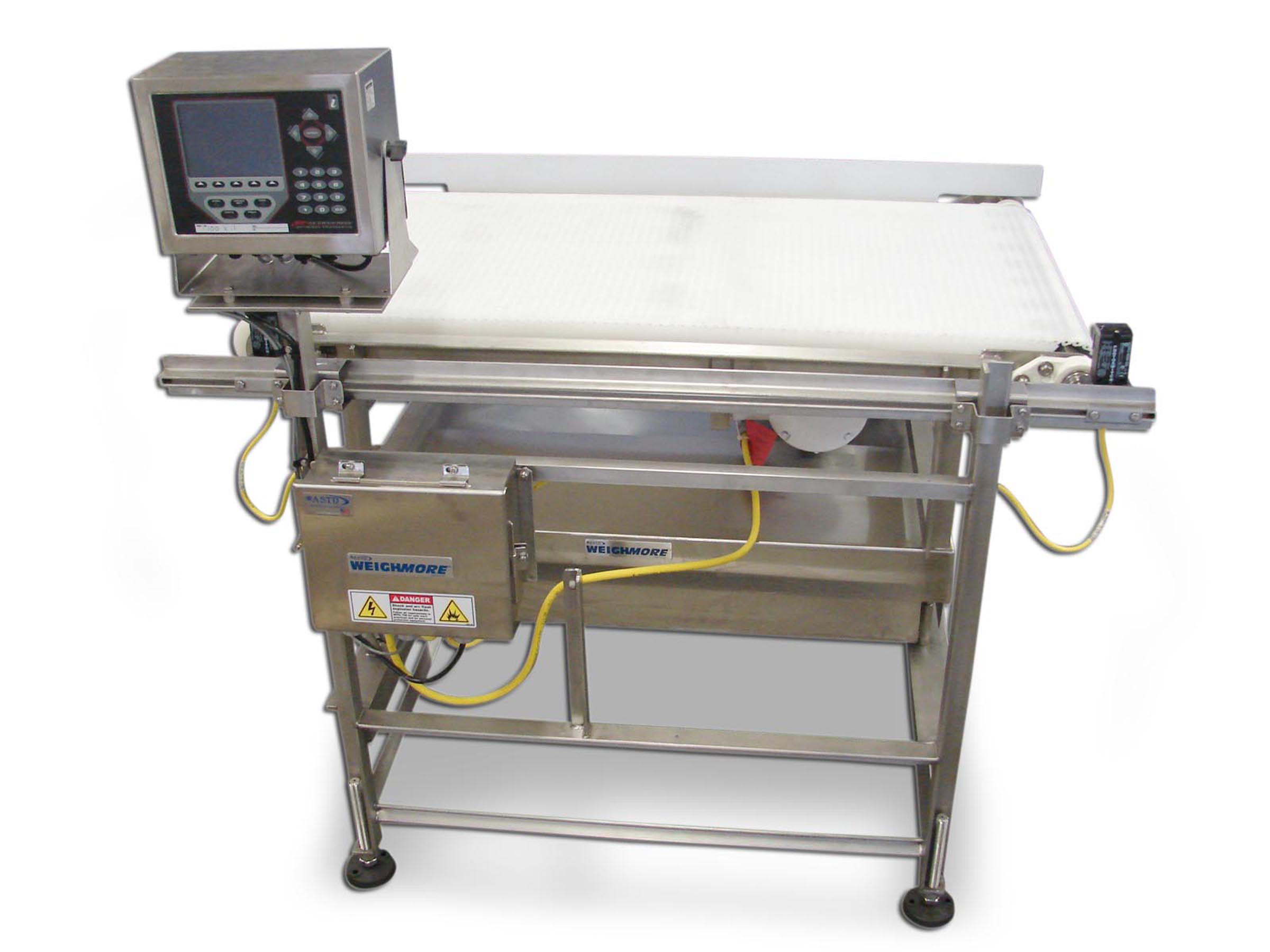
Aluminum vs. Stainless Steel: Choosing Conveyor Scale Construction
Aluminum vs. Stainless Steel, December 02, 2014
When looking for a good conveyor scale, you might not realize that the choice of construction materials and methods is one of the most important factors in your decision. A simple option for your structure material can make all the difference. When looking at materials for our conveyor scales, the materials we offer are aluminum and stainless steel. Let’s investigate why you should choose one versus the other. Mild/ painted steel can fill a similar role as aluminum and stainless, but it doesn’t have the same versatility in various environments that they can boast.
It doesn’t have the same resistance to rust and corrosion that stainless steel or aluminum does, depending on the environment. That is why mild steel has to be painted and repainted periodically to protect the metal’s surface from various elements. When you compare stainless steel (in our case, Grade 304 or optionally Grade 316) and aluminum, there are some characteristic differences to account for. Stainless steel has an ultimate strength that is a good deal higher than that of aluminum, meaning that it will take much more to fracture.
This means that stainless steel is also more durable to work with because stainless steel will yield enough when bending, but it won’t form cracks as quickly as aluminum will. At the same time, aluminum is quite a bit lighter than stainless steel which offers many advantages in itself.. Stainless steel can handle higher pH levels than aluminum can when it comes to corrosion resistance. For this reason and in addition to various food safety regulations, we designate stainless steel as our choice in direct food contact construction because it is able to stand up to the usage and cleaning practices used in the food industry. Does this mean that aluminum is to be avoided with conveyor scales? Not necessarily.
Aluminum conveyor scales are a lightweight and durable alternative to processes that require a different type of corrosion resistance. For example, a conveyor scale weighing small boxes or packages could easily be made out of aluminum because it wouldn’t require corrosive chemical cleaning. Aluminum is a little more affordable than stainless steel, so this would be a wise economic choice for many companies. Neither material is inherently a bad choice, but you have to know the proper use for each to make the best decision. Getting a quality conveyor scale requires quality design decisions, and we are always willing to help with that.
See our Conveyor Scales.

VBS Inc History
Located in Sioux Center, Iowa, since 1964, Vande Berg Scales has built a solid presence in the meat, dairy, food, and manufacturing industry as a leading force in measurement, accuracy, and automation.
Our 15,000 square feet manufacturing facility is located in the heartland of Northwest Iowa.
Automation, Measurement, and Design are our specialties. Currently, VBS Inc. employs over 40 personnel who make up our sales, marketing, administration, production, computer programming, and service departments.
Today, we offer our customers a huge range of weighing, measurement, and automated systems under the brand names: Vande Berg Scales, WeighMore®, Easy-To-Clean™, Ecoline™, and A.S.T.D®.
Vande Berg Scales sells truck scales, agricultural solutions, standard equipment, and we service just about any scale or automated system that needs fixing.